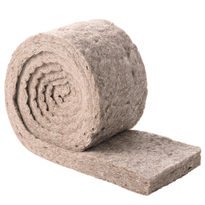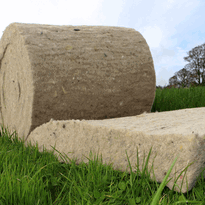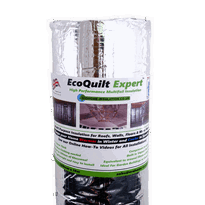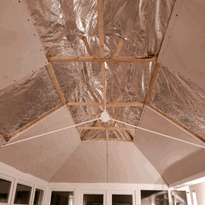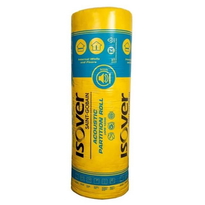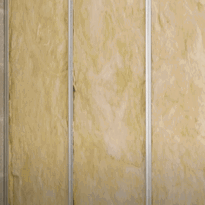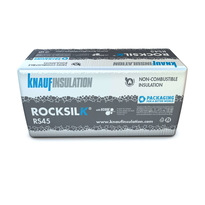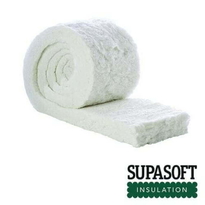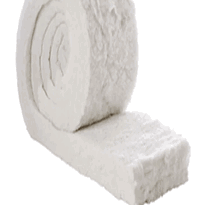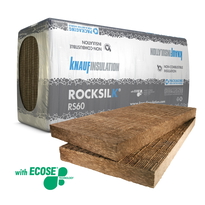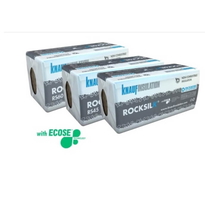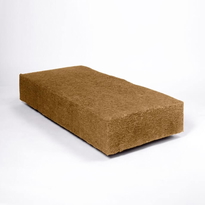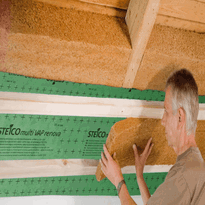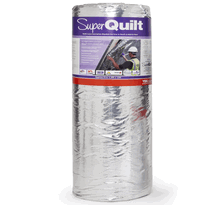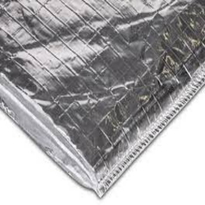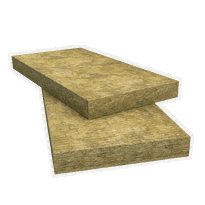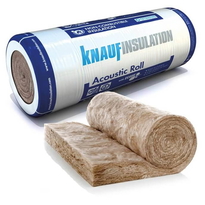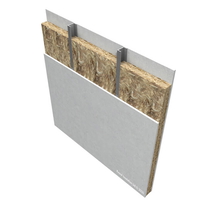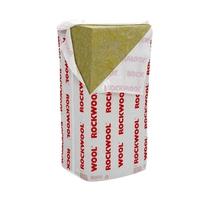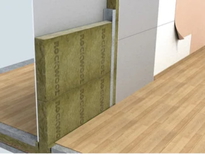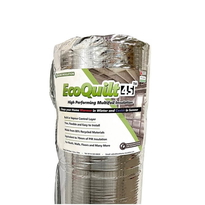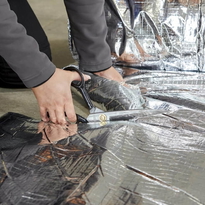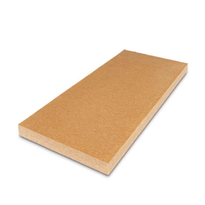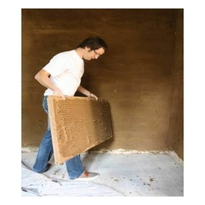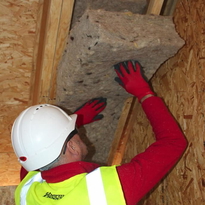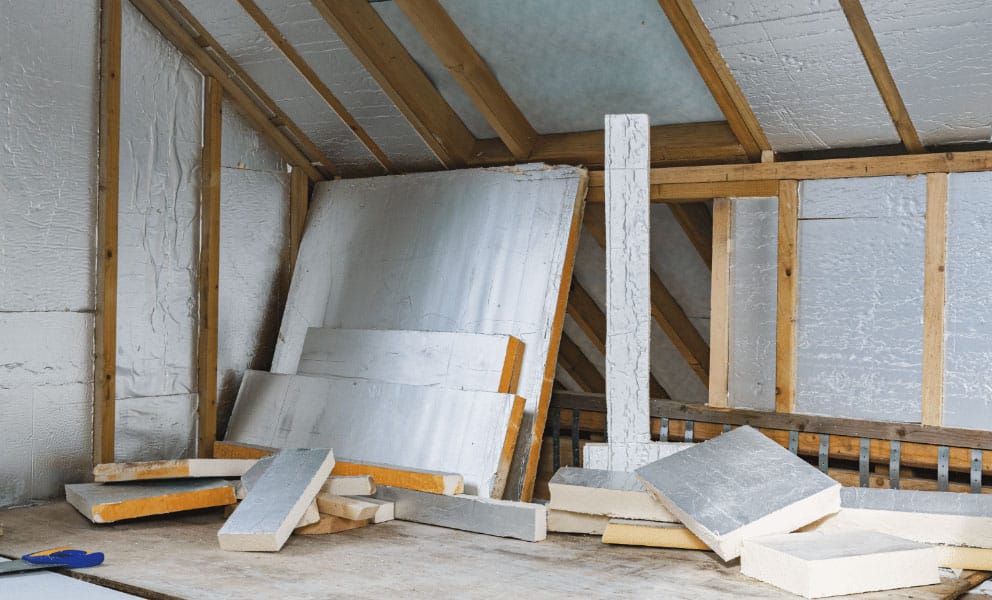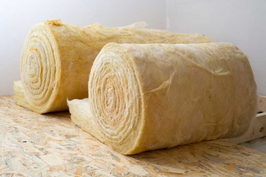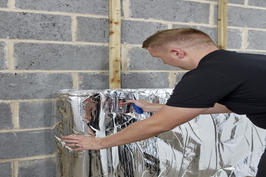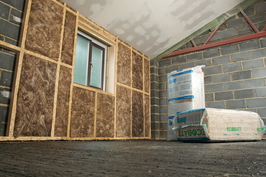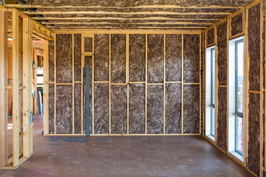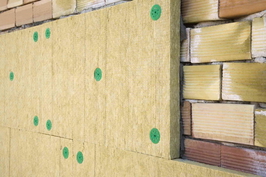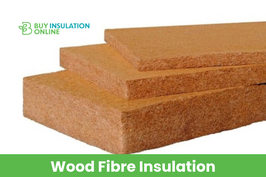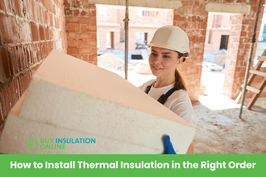Similar Categories
How to Choose the Right Stud Wall Insulation For Your Home.
Whatever the reason, there are a few things you need to consider before choosing the right stud wall insulation for your needs.
We will refer to acoustic rolls throughout this article but it is also known as Acoustic Partition Roll or APR for short, so we will use the 2 interchangeably
When it comes to making your home energy efficient, there are many different options to consider. One of the most effective ways to make your home more energy efficient is by investing in stud wall insulation.
Stud wall insulation is a type of insulation that is installed between the studs, which are the upright timber/metal frame that makes up your walls.
Usually, these studs are around 75mm to 100mm thick, which means that you could potentially introduce 100mm thick wall insulation to help to prevent heat from escaping through your walls.
What stud wall insulation materials are available?
Insulated stud walls are also a great way to improve the energy efficiency of your home. There are several materials that can be used to insulate stud walls, including expanded polystyrene (EPS), polyurethane (PU), and polyisocyanurate (PIR). PIR insulation is a popular choice for stud walls, as it has a high thermal performance and can be easily cut to fit the dimensions of your wall cavities. PIR insulation is also available at B&Q and other home improvement stores. We also stock PIR here at Buy Insulation Online
How thick are stud walls in the UK?
When insulating your stud walls, it's important to consider the thickness of the insulation as well. In the UK, stud walls are typically around 100mm thick, so you'll need to choose an insulation material that is thick enough to fill the cavity and create an effective barrier against heat loss and sound waves.
Why do you want to insulate your internal partition walls?![]()
This type of insulation helps keep out cold air in winter and hot air in summer, making your home more comfortable all year round.
Additionally, it helps reduce noise pollution from outside sources as well as prevent moisture buildup on inner walls which can lead to mould growth and other structural damage.
Stud wall insulation can be used in any wall type, including brick, concrete, and wooden walls. It's also a good option for walls that have limited space available.
In addition, stud wall insulation can help to reduce noise pollution from neighbouring properties and even separate rooms in the house
In this article, we’ll discuss the benefits of using stud wall insulation, as well as the best practices for installation.
From choosing the right insulation material and properly sealing all joints to ensuring airtightness and meeting building codes, we’ll cover everything you need to know about stud wall insulation.
With these tips, you’ll be able to maximize the effectiveness of your insulation system and save on energy costs.
Types of Insulation for Stud Walls
First, you must decide what material you want your acoustic roll insulation to be made from. There are a variety of options, including fibreglass, mineral wool, and foam. Each option has its own set of benefits and drawbacks, so it's important to do some research and decide which one is right for you.
There are a few different types of insulation that can be used in stud walls. The most popular option is Acoustic Partition roll insulation or APR for short.
This is a type of insulation that is made in rolls of insulation similar to loft insulation rolls, but they are denser which traps more sound, making them great as dual-use acoustic insulation and thermal insulation at the same time. This type of insulation is usually installed between the studs using either screws or nails.
While Acoustic Partition roll insulation is the most popular option for stud wall insulation, there are other options available as well. For example, you could install rigid foam insulation between the studs using screws or nails.
This method is labour intensive as it's difficult to close all the gaps and get a snug fit which allows the insulation to do its job.
Foam board insulation is no good as acoustic insulation though and it also does not allow moisture to pass through it so it could mean a build-up of moisture inside the wall unless an appropriate vapour barrier wrap is used in addition to it.
You also have rigid mineral wool insulation batts like RWA45 and RS45 / 60 which are made from Rockwool and Fibreglass respectively.
These batts are a popular choice for stud wall insulation as they are both thermal and acoustic insulators.
Knauf RS45/60 and Rockwool RWA45 are both euroclass a1 non combustible, meaning they do not contribute to the spread of fire and offer the highest levels of fire performance possible.
How much stud wall insulation do I need?
Second, you need to determine how much insulation you need. This will depend on the size of the area you're trying to soundproof as well as how much noise reduction you're hoping to achieve.
Again, it's important to do some research and figure out exactly how much insulation you'll need before making a purchase.
How to soundproof internal walls?
 The main way to effectively reduce sound transmission is to introduce sound proof insulation for stud walls such as APR rolls or acoustic insulation slabs such as RWA45 and RS45.
The main way to effectively reduce sound transmission is to introduce sound proof insulation for stud walls such as APR rolls or acoustic insulation slabs such as RWA45 and RS45.
Using acoustic plasterboard is an excellent way to improve the soundproofing of your internal walls. It is much denser than standard plasterboard, which makes it harder for sound waves to travel through. It is also recommended for soundproofing between floors.
Using acoustic plasterboard or acoustic panels will improve the acoustics in your room, as well as the mass of your walls. You will want to use resilient mount clips if you're installing acoustic plasterboard.
Resilient channels are effective to reduce airborne noise. They are installed between the studs and the drywall. They act as a spring between the drywall and the studs, which prevents vibrations from passing to the studs.
You will also need to add a layer of acoustic sealant to the perimeter of the stud wall. All of this combined should effectively reduce sound vibrations from being transmitted through walls to adjacent spaces.
What do else I need to consider for stud wall insulation?
In addition to selecting an appropriate type of product for use based on budget, desired level of thermal resistance or K value required (generally lower K values mean better heat retention) additional measures should also be taken when installing any form of interior stud wall insulating system.
This includes ensuring that there are no gaps left between edges where cold air might leak in through these areas instead creating an appropriate vapour barrier using breathable membranes before final finishing touches with plasterboard sheets etc.
Also, consideration should be given regarding how much space there is within each individual timber frame stud such that suitable-sized slabs can fit snugly without having excessive excess material on either side reducing effectiveness by creating too much compression thus reducing overall effectiveness when installed correctly
However, this would depend upon what kind/type product you intend using whether mineral wool slabs/batts/rolls etcetera.
Preparing the Wall for Insulation
Obviously, you can only install stud wall insulation if the plasterboard or cladding that makes up the wall facing is removed so this type of insulation is only suitable to be installed during refurbishment works or when the wall it's first being built during the initial construction stage.
Let's assume the stud wall is in situ and existing.
The first step in insulating a stud wall is to open up the wall by removing the plasterboard.
Then you must prepare the wall cavity whilst it is empty. This includes inspecting the wall for any existing damage, such as cracks or gaps in the drywall, and making necessary repairs.
Once the wall is in good condition, it needs to be sealed off from the external environment, that is the spaces that the wall partitions.
This is done by using expanding foam and sealant around the edges of the wall and any holes that lead into the loft or other parts of the house. Also using a vapour membrane will help prevent moisture ingress into the wall cavity.
Installing the Partition Insulation
Installing the insulation is the next step in the process of stud wall insulation. Depending on the type of insulation you have chosen, there are a few different methods you can use to install it. For example, with rigid foam boards, you will need to measure and cut them to fit the exact specifications of the wall cavity, and then attach them to the studs with nails or screws.
For batt insulation, you will need to cut the batts to fit the wall cavities. As long as they are not cut too big or too small then they should compress slightly to allow you to spring them in between the studs. Infact products like Rockwool Flexi excel at this as this is exactly what they have been designed to do, but it is also the case with RWA45 and RS45 too.
If you are using loose-fill insulation, such as cellulose or fibreglass, you can use a blowing machine to fill the wall cavities with the insulation. We won't talk about this option much as its not very popular for internal stud walls.
Benefits of Insulating a Stud Wall
Insulating a stud wall is an excellent way to improve the energy efficiency of a home. Not only will it reduce your energy bills, but it will also make your home more comfortable year-round. Here are five benefits of insulating a stud wall:
1. Increased energy efficiency:![]()
Insulating a stud wall helps to prevent the loss of heated or cooled air, keeping your home comfortable.
2. Improved air quality:
Insulating a stud wall helps to reduce drafts and improve air quality, making your home a healthier environment.
3. Reduced noise:
Insulating a stud wall helps to block out unwanted noise from outside sources.
4. Reduced condensation:
Insulating a stud wall helps to reduce moisture buildup and the potential for mold and mildew growth.
5. Increased savings:
Insulating a stud wall helps to reduce energy costs, saving you money in the long run.
In conclusion, stud wall insulation is an effective and affordable way to reduce energy costs while providing a comfortable living environment. It’s also a great way to protect your home from temperature extremes and moisture, resulting in a healthier home and improved air quality.
With proper installation, you can be sure that your home will remain comfortable and energy efficient for years to come.
